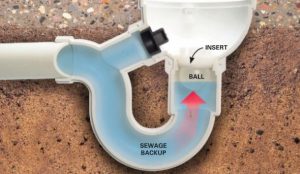Preventing Sewer Backups

Sewers are one of the most neglected issues of our home. But, it can cause a huge havoc in your life if you tend to neglect it continuously. Most of the times, due to the aging, sewers trigger backups and as a result of that, your house becomes flooded and you have to lose a lot of hard earned money due to this. Now days, sewage pollution is a very big issue to deal with. Many of us are struggling daily due to sewer related problems. Due to this, we have to face many problems like damaging of walls, floors, furniture, electrical systems and home appliances as well. To tackle all these, let us discuss about some tips to prevent sewer backups:
-
Floor drain plug
Floor drain plugs are the simplest preventive solution, which you can look for to avoid sewer backups. They are a bit expensive, but one cannot question their efficiency. To avert water from backing up, these grain plugs need to be installed below the floor drain grates. Once the conditions of the sewers come back to normal, the special float is deactivated to let the water arrive again through the opening. While using these plugs, make sure of the fact that the float mechanism is free from any wreckage’s or else the proper function will be hampered.
-
Standpipe
Another simple way to avoid sewer backup is to use standpipe. The work function of this pipe is very simple. Surrounded by a watertight rubber tube, basically, it is a simple pipe which is stuck in the floor drain. If the backup is deeper than 3 feet, then the pipe will not work as the water will flow over it or else, this pipe is capable of holding the water coming out of your drain so that it doesn’t touches the ground. Once the flood condition is out of threat you can remove this pipe from the drain and allow the water to spill into the drain.
-
Overhead sewer
If you want an ultimate protection from the sewer backup, nothing is as good as overhead sewer. But, it is the costliest remedy in the list. To install an overhead sewer in your house, you will need a building permit and a licensed plumber as well. If any overflow happens, after installing this, the water will be stored in a place called sump. From there, the water will be pushed to the overhead pipes, which will drain the water to main sewage line of the building. So, if you have enough money you should go for this process as it is the best possible option that you will get.
-
Back water valves
Also known as a backflow prevention valve, this is another costly yet efficient method to stop the sewer backup. You have to install water back water valves in the basement, which is present at the exit point of your building or you can also install it to the underground pipes, which attaches the sewer lines to the closest manhole. Most of the times this sewer backup protection is used to get rid of the basement flooding. Make sure to consult an experienced plumber before installing back water valves. Although, it is a costly process, but it can save a huge amount of money of yours by providing you the protection from sewer backups.
Sewer backups are one of the most common household problems, which we have to face very often. As a result of that we lose a lot of money and time tackling with this problem. To fight the sewer backups, go through the above written article very carefully and protect your house from sewer backups.
